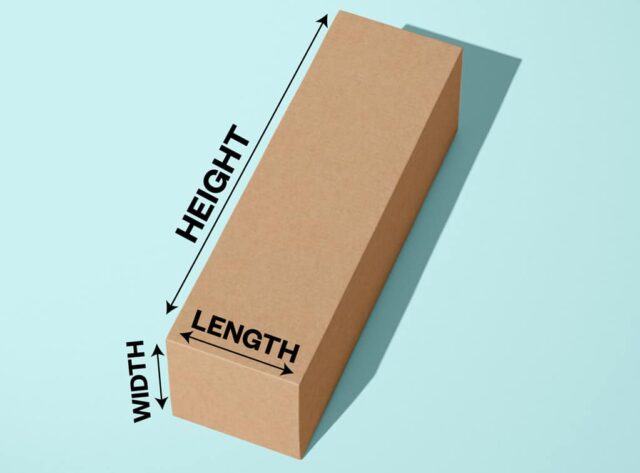Box measurement is essential for shipping and fitting items into storage spaces. This detailed guide gives you step-by-step directions and box measurement tips. We’ll cover the basics, like how to measure a box for shipping and how to measure shipping box dimensions. To help you comprehend length, breadth, and height measurement, we go into detail.
In the world of shipping, storage, and organization, accurate measurements are paramount to ensuring seamless processes and optimal space utilization. Whether you are preparing a shipment, organizing your belongings, or planning storage solutions, understanding how to measure a box correctly is a fundamental skill. In this comprehensive guide, we will delve into the intricacies of box measurement, covering essential techniques and considerations that will empower you to accurately determine the dimensions of any box.
Understanding Box Sizes
Before measuring, you must understand the dimensions. Typically, a box’s length, breadth, and height determine its size. Height is the distance from the base to the top of the box while standing erect. Length is the longest side. Understanding these measurements is crucial for precisely measuring the box for shipping, storage, or other purposes.
Box Measurement
A ruler, tape measure, or measuring stick are needed to measure a box. These tools let you measure accurately.
- measure length
Find the box’s longest side to determine its length. For accurate measurements, place your measuring instrument flush against the box on this side. Measure straight lines and avoid curved surfaces to avoid skewing results. Note this quantity and its units (inches, centimeters, etc.).
- Measure Width
Following the length measurement, measure the box width. The shorter side next to the length is this dimension. For precision, position your measuring tool straight and level across this side. Take this measurement with the length.
- Measure Height
Box height is measured from base to top. Your measuring instrument should be at the base and extend to the top of the box when upright. This measurement is crucial for measuring the box’s volume and fitting it into shipping containers or storage facilities. Take accurate measurements again.
Box Measurement for Shipping
Shipping prices and carrier rules depend on box size, therefore measuring them carefully is essential. In addition to length, breadth, and height, box girth is important, especially for carriers with size constraints.
To measure the box’s length, breadth, and height, follow the preceding procedures.
Calculate girth by measuring box perimeter at thickest point. Add the width and height dimensions and double them. Girth and length decide if the box meets carrier size requirements.
Combine length and girth to get package size, which helps you determine if it fits carrier shipping requirements.
Accurate Measurement Tips
- Being flexible is key: A flexible tape measure can give more accurate readings for non-rectangular boxes by adjusting to their contour.
- Precision by Repetition: Measuring dimensions twice or thrice reduces errors, especially for shipment.
- Wall Thickness Matters: Consider box wall thickness while fitting an object inside. This can substantially impact your item’s internal volume.
Advanced Measurements
Measure Uneven Boxes
Non-rectangular boxes demand additional precision when measuring. Find the box’s longest, widest, and tallest points. These spots may be harder to find than rectangular boxes, therefore take numerous measurements at different portions and choose the maximum results.
Considering Box Volume
Calculating box volume is useful when planning storage or transportation. Multiply length, breadth, and height to get volume. The volume will be in cubic units like your measurement units (e.g., cubic inches, cubic centimeters).
Handling Rounded or Tapered Boxes
Tapered or rounded boxes require a different technique. Tapered boxes should be measured top and bottom separately and averaged for an estimated size. Find the longest straight line across rounded boxes for length and breadth.
Conclusion
It may seem simple to measure a box’s length, breadth, and height, but precision is crucial in shipping, where measurements can affect costs and logistics. You can precisely measure boxes of various sizes by following this guide’s detailed procedures and advice. Remember, accurate measurements make packing, shipping, and storage efficient, making this ability useful for personal and business duties.







